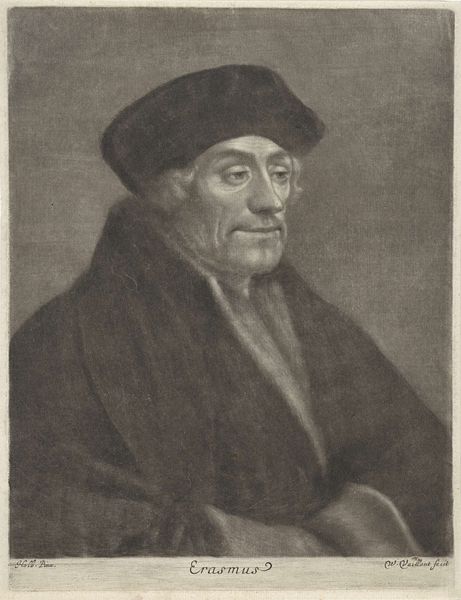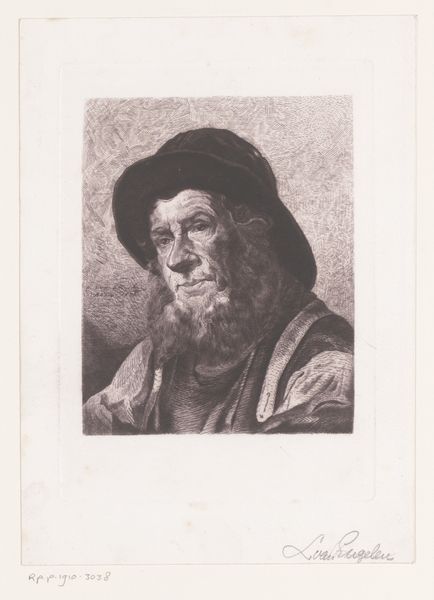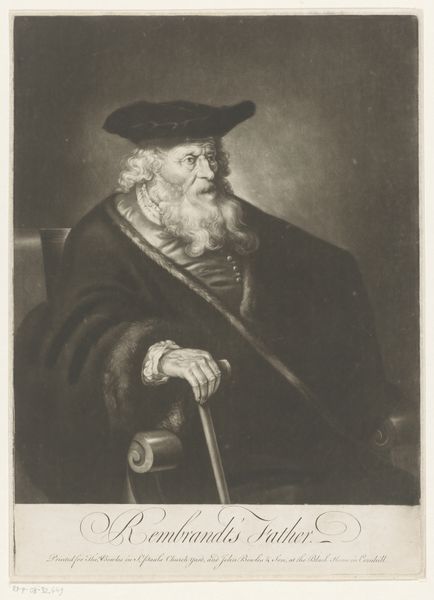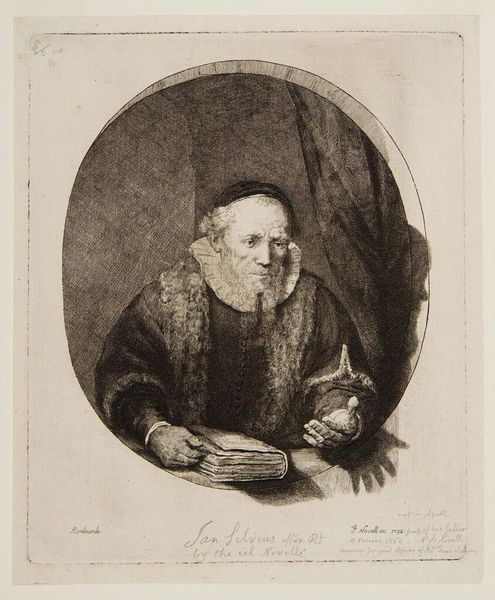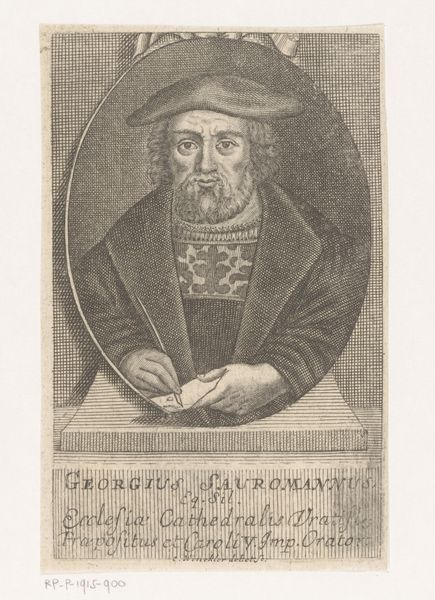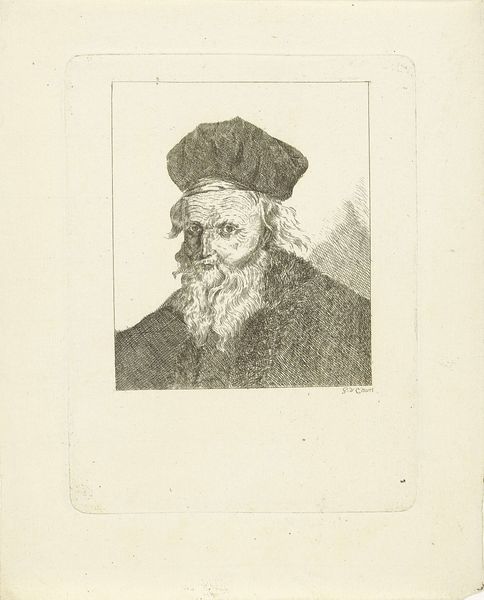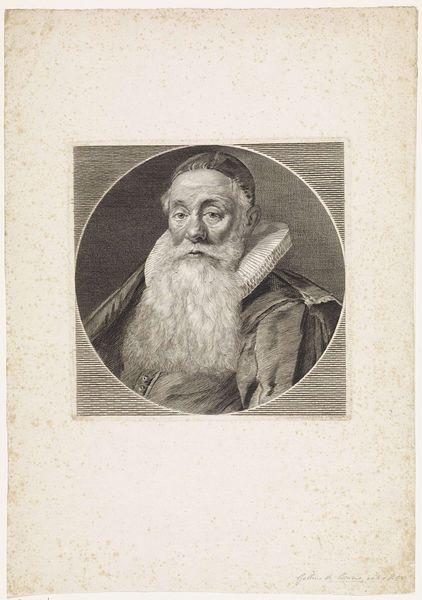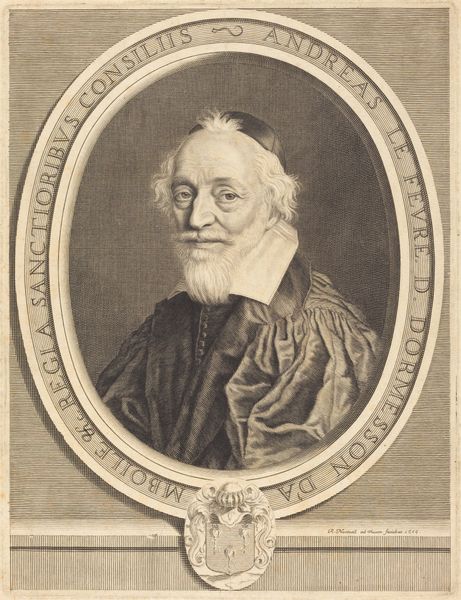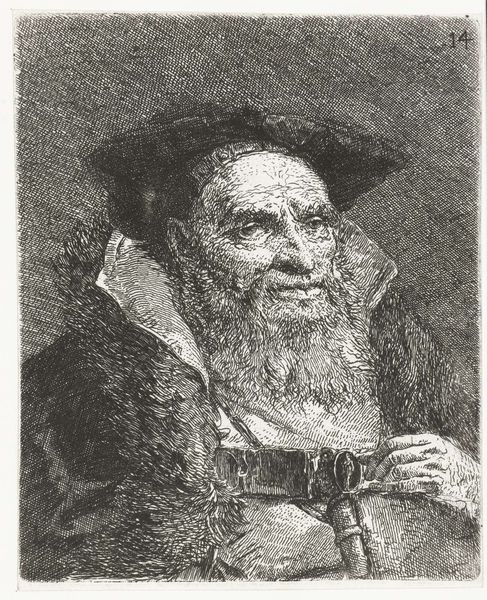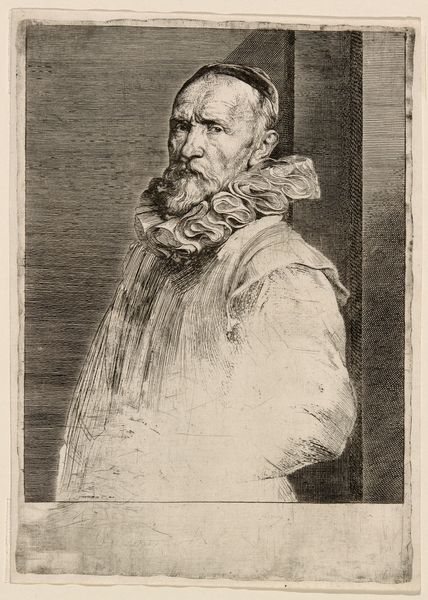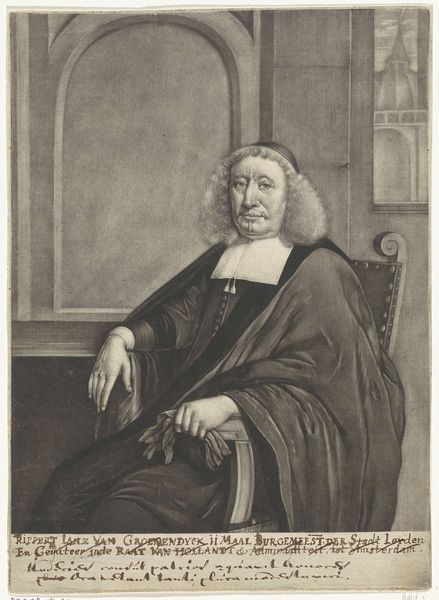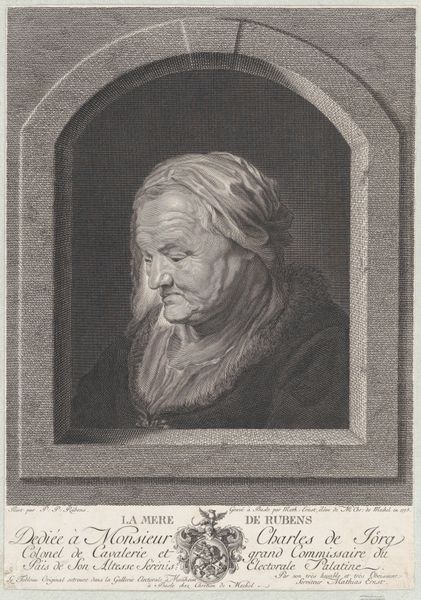
print, engraving
#
portrait
#
baroque
# print
#
old engraving style
#
form
#
line
#
history-painting
#
engraving
#
realism
Dimensions: height 218 mm, width 151 mm
Copyright: Rijks Museum: Open Domain
Curator: The somber tonality in this rendering certainly sets a serious tone, wouldn't you agree? Editor: Indeed. This portrait engraving, portraying Jacob van Hoorn, presents a rather intense gravity right from the start. One almost feels a heavy historical weight radiating from it. The textures feel deep, despite the rather limited tonal range. Curator: That sense of gravity is no accident. We believe it's the handiwork of Johannes de Groot II, created sometime between 1734 and 1776. Look at the line work; each cut meticulously details the subject’s features. The print is, I believe, an exercise in baroque realism and captures not just a likeness but a particular social persona. Editor: And what a persona! There’s something striking about how his agedness is depicted, not just physically but almost as a badge of honor. You have to appreciate how the oval frame is employed; it's so characteristic, isn’t it, yet here it seems to add to the intimate yet formal ambiance. Do you see it perhaps as a way to enshrine him, placing him within a symbolic hall of fame? Curator: Precisely. He lived to 97, married for the fourth time! Look at the text below; it commemorates these details directly beneath his likeness. It's designed not just as an artwork but as a historical record. Editor: I find myself wondering about the choice to create a print instead of, say, an oil painting, especially given the socio-economic status this gentleman likely held. The engraving makes this imagery very repeatable, accessible; was this a deliberate attempt to democratize his image in some way? Curator: Perhaps. Or maybe to underscore certain virtues. Engravings, while less opulent, possess a kind of moral seriousness that resonates with republican values valued then. It made the image much easier to spread around, increasing his historical impact. Editor: Food for thought! Considering its time, it bridges personal portraiture with socio-political imagery. It's a tangible reminder of an individual life, but it tells us a great deal about societal values too. Curator: Absolutely. The portrait, seemingly a simple dedication, unfolds to reveal cultural narratives. It serves as a perfect example of how imagery, at times, transcends individual portrayal, embedding itself into collective cultural consciousness.
Comments
No comments
Be the first to comment and join the conversation on the ultimate creative platform.
